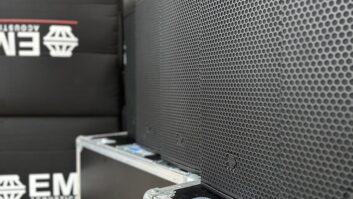There is a long-standing contradiction surrounding audio in shops, bars, and restaurants and, on a larger scale, any public area where people go to buy things or generally socialise. On one side is the argument that any music or speech – particularly advertisements or unhelpful ‘helpful’ announcements other than emergency messages – is intrusive and distracting. The opposite view is that sound in general – and music in particular – creates a background ambience that encourages people to spend more time shopping, as well as forming the backdrop to the good time being had by diners and other revellers.
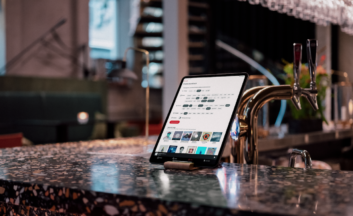 The ‘anti’ viewpoint most likely comes partly from the experience of randomly selected tracks that play from a poorly distributed source, making the music either overpoweringly loud or too quiet to hear what it is, which can be equally annoying. The aim of suppliers today is to enable users to ‘tailor’ playlists that not only entertain the customers but also say as much about the brand of the business in question as the visual styling.
The ‘anti’ viewpoint most likely comes partly from the experience of randomly selected tracks that play from a poorly distributed source, making the music either overpoweringly loud or too quiet to hear what it is, which can be equally annoying. The aim of suppliers today is to enable users to ‘tailor’ playlists that not only entertain the customers but also say as much about the brand of the business in question as the visual styling.
Music studies
This aspect of audio was highlighted in a survey conducted by retail management students Jasmine Moradi and Gabriella Johansson in 2015, in association with background music technology developer Soundtrack Your Brand and Swedish fashion chain GANT. Among the study’s findings was that background music reflecting a company’s branding increased the time customers spent in a store that had been using “incongruent background music” by 1.58 percent. In situations where targeted playlists were used in stores that had not played background music previously, the amount of time spent shopping rose by 42.24 percent.
In their conclusions for more effective audio in retail and hospitality, Moradi and Johansson recommended that companies should drop CDs and “private playlists” in favour of centralised music management that worked in conjunction with other in-store factors, such as decor, scents, lighting and even the staff. Many installers are now working along similar lines, often bringing in influences from sectors that were hitherto unconnected with shops, bars and restaurants.
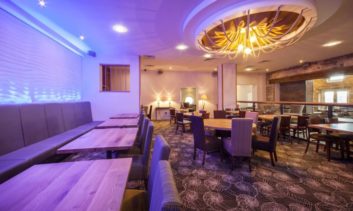 Autograph Sales & Installations has its roots in musical theatre, as well as other areas of the performing arts, but is now using that experience to design and equip stores and hospitality venues. Technical audio engineer Euan Mackenzie comments that in “retail environments” the company is installing “discreet immersive soundscapes”. These, he explains, are designed “to generate an atmosphere, creating an ‘experience’ for customers. This simple scene-setting has been seen to increase sales and the same system is used for ‘on-the-hour show’ involving video walls, lighting, water fountains, curtains and fog and rain machines.”
Autograph Sales & Installations has its roots in musical theatre, as well as other areas of the performing arts, but is now using that experience to design and equip stores and hospitality venues. Technical audio engineer Euan Mackenzie comments that in “retail environments” the company is installing “discreet immersive soundscapes”. These, he explains, are designed “to generate an atmosphere, creating an ‘experience’ for customers. This simple scene-setting has been seen to increase sales and the same system is used for ‘on-the-hour show’ involving video walls, lighting, water fountains, curtains and fog and rain machines.”
Fully applied
Such performance-oriented techniques are applied more fully by Autograph for hospitality projects. This, Mackenzie says, can involve a dedicated stage for bands or equipment to enable musicians to move from table to table in a restaurant serenading the patrons. The key element in this, he states, is the control system: “It must allow for complex changes to be made by anyone. The system has evolved beyond a simple volume knob on a wall into a touch screen with customised controls. A single button can now change several parameters – audio control and playback, video, lighting and physical elements like blinds – and give the user visual feedback that the system is doing what it should be doing.”
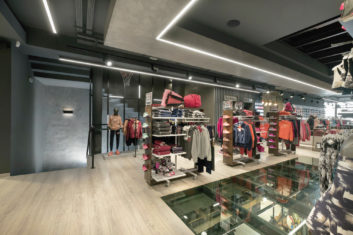 This kind of control and flexibility is also being used by businesses to re-establish High Street shops in the face of internet consumerism, which has changed shopper habits considerably in the last three decades. “The real key for development in retail/hospitality is for the industry to think much more about the ambience and consumer experience than before in order to compete with the huge boom in online shopping,” says Ian Bridgewater, director and technical sales manager at TOA Corporation UK. “Retailers have to create an atmosphere that entices shoppers and audio, in the form of both music and advertising/remarketing, gives retailers the tools to extend their offering beyond the shop door.”
This kind of control and flexibility is also being used by businesses to re-establish High Street shops in the face of internet consumerism, which has changed shopper habits considerably in the last three decades. “The real key for development in retail/hospitality is for the industry to think much more about the ambience and consumer experience than before in order to compete with the huge boom in online shopping,” says Ian Bridgewater, director and technical sales manager at TOA Corporation UK. “Retailers have to create an atmosphere that entices shoppers and audio, in the form of both music and advertising/remarketing, gives retailers the tools to extend their offering beyond the shop door.”
Multi-function
Background music is only one aspect of what audio systems are now expected to deliver for retail and hospitality applications. Voice evacuation (VA) and public address (PA) announcements are equally important, which means, observes Bridgewater, that installations need to have a high degree of multi-functionality. “It has to be one simple system that is easy to operate by multiple staff,” he says. “With long operating hours, seven days a week, these industries have a profile of high staffing ratios that any system needs to address. Flexibility is also key, with a system that needs to be split into zones, especially with large projects over many floors. This makes it possible to make different announcements in each individual zone.”
After having been much the same for hundreds of years, the retail market has changed considerably in recent times and continues to evolve. The latest development is something of an ironic turnaround, with online retailers – known more formally as direct-to-consumer (DTC) suppliers – opening up in physical locations. The prominent example of this is Amazon, which has a chain of grocery stores in the US and opened its first venture outside that country in March this year with Amazon Fresh in Ealing, west London.
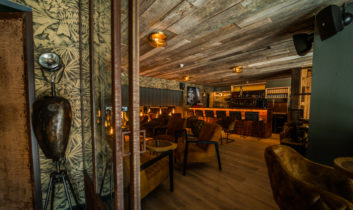 This means, says Caitlyn Rough, senior manager of business development for HARMAN Professional Solutions, that the traditional retailers left in the market are not only competing against each other but also the new breed of contactless, stripped down outlet from DTC brands.
This means, says Caitlyn Rough, senior manager of business development for HARMAN Professional Solutions, that the traditional retailers left in the market are not only competing against each other but also the new breed of contactless, stripped down outlet from DTC brands.
“Audio and background music are more important than ever before [because of that],” she says. “To keep shoppers coming in you have to be able to create a unique experience and music is a big part of that. Given the state of the market right now, a lot of people are doing outdoor, pop-up type solutions, using portable loudspeakers and PAs. The ability to be flexible and meet those changing needs is where the market’s going, although fixed stores still need installed speakers as well.”
Immersive audio
Belgian manufacturer AUDAC produces a range of products for retail installation, including audio players, amplifiers, loudspeakers and digital matrices. CEO Tom Van de Sande picks up on the increasing demand for “a full immersive sound experience”, which calls for the best possible source quality. “You also need to have solutions that are easy to install, flexible to mount and compact,” he adds. “And being user friendly for day-to-day use of the installation is crucial. But there should be just one solution or device instead of several devices, especially when deploying a system for many different applications. So you would have one single half 19-inch rack package for playing out audio, including voice files for commercials, pre-amplification, main amplification and triggering timed events.”
In hospitality, the need has increased for audio systems that can handle a variety of performance styles and sizes. Emma Bigg, managing director at AV consultancy and project management company Octavius RE, says that as part of this the installation has to deliver high quality sound through well-placed loudspeakers, so that no customer is subject to unnecessarily high levels from a single source that is trying to cover a large space.
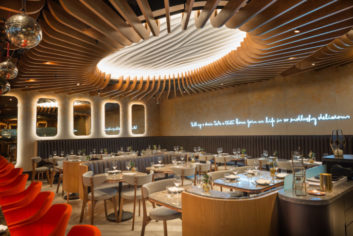 For this type of installation, Bigg recommends multi-channel amplifiers that can be changed from low impedance to high impedance. “This is a key technology because it offers extremely efficient amplification solutions and it is even better if there is on-board DSP,” she explains. “If you can have simple routing and volume control on your amplifier, it allows small venues to access digital audio products more easily, providing more controllable, higher quality sound. For larger venues, the advent of cost-effective digital signal processors aimed at the business market has been a great step forward. Using a digital controller gives venues much more flexibility to adapt a sound system than a fixed analogue solution. Mobile apps also give operators much greater control over the audio experience than ever before.”
For this type of installation, Bigg recommends multi-channel amplifiers that can be changed from low impedance to high impedance. “This is a key technology because it offers extremely efficient amplification solutions and it is even better if there is on-board DSP,” she explains. “If you can have simple routing and volume control on your amplifier, it allows small venues to access digital audio products more easily, providing more controllable, higher quality sound. For larger venues, the advent of cost-effective digital signal processors aimed at the business market has been a great step forward. Using a digital controller gives venues much more flexibility to adapt a sound system than a fixed analogue solution. Mobile apps also give operators much greater control over the audio experience than ever before.”
Hard hitting
Hospitality, like retail, has been hit hard by the coronavirus pandemic, Pubs, bars and restaurants have suffered through either having to shut completely or open only sporadically, sometimes solely for take-away service. Bigg acknowledges that the hospitality sector has “struggled” and that many operators have not and will not survive. “For those that can,” she continues, “it has presented an opportunity to refresh and upgrade sites in a more relaxed manner. Without the pressure of opening as fast as possible to avoid losing trade, projects have either been brought forward or happened at a more considered pace. Operators are also looking at flexible layouts to change the quantity and placement of covers, giving themselves the ability to adapt alongside the Covid-19 restrictions whilst still attracting custom.”
As much as people are keen and excited about being able to go out, meet friends and have a drink or a meal, being back in a pub or restaurant could hold some unforeseen surprises. “The ambient sound of these spaces will take some getting used to again,” observes Euan Mackenzie at Autograph. “Background noise from kitchens, coffee machines and other patrons could be quite distracting for people while holding a conversation. The technologies we use in these spaces now give us the tools to better cater the audio to the environment and have it adapt in real-time through ambient noise monitoring and dynamic equalisation.”
Permanent impact
HARMAN’s Caitlyn Rough says that while the long-term, permanent impact of Covid cannot be assessed right now, it has resulted in some trends accelerating. “What I am seeing is off-site network controllability and monitoring being even more important because you’re not always going to have a tech on site,” she explains. “You need to be able to control that from the corporate HQ, home or somewhere else, with the ability to troubleshoot or schedule maintenance.”
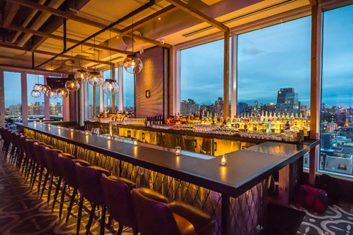 Ian Bridgewater of TOA comments that Covid has “greatly affected the installation of new products” for retail and hospitality, although the drop in business over both sectors has been “an ideal time for upgrading” because building work, particularly in the UK, has continued. “Audio was in a period of change prior to Covid,” he says, “with the move from analogue to digital. We anticipate systems to be upgraded in line with this technology rather than it being a direct result of Covid. The biggest impact will be how many High Street units remain closed in the future and how they will be redeveloped.”
Ian Bridgewater of TOA comments that Covid has “greatly affected the installation of new products” for retail and hospitality, although the drop in business over both sectors has been “an ideal time for upgrading” because building work, particularly in the UK, has continued. “Audio was in a period of change prior to Covid,” he says, “with the move from analogue to digital. We anticipate systems to be upgraded in line with this technology rather than it being a direct result of Covid. The biggest impact will be how many High Street units remain closed in the future and how they will be redeveloped.”
Whatever the size, type and layout of shops post-Covid, audio systems will be a primary consideration in the design. Equally important will be what is played on this technology and in what form. The means of playing pre-recorded music in a shop, bar or restaurant has changed significantly in the last 30 years. After industrial cassette machines, CD jukeboxes, solid state and digital formats, streaming is now providing more choice and functionality, just as it is in the home.
Targeted playlists
Soundtrack Your Brand is a music service provider that was set up specifically to exploit the ease of use and ability to build targeted playlists offered by Spotify. Founded by CEO Ola Sars, Soundtrack Your Brand can be broadly described as a business-to-business (B2B) version of Spotify, which has provided some of the investment behind the venture. Sars came from the consumer sector – he was a co-founder of Beats Music – where he had been approached by brands such as McDonald’s, GANT, Marriott Hotels and General Motors to provide music services.
Launched in 2018, Soundtrack Your Brand uses cloud-based machine learning platforms and “massive amounts of computing power” to analyse available music and provide what Sars calls “an everlasting soundtrack” for business owners. “The aim was to open up the ability of the background music space and use the power of streaming to give real-time access to this beautiful catalogue of art that is the music industry,” he explains.
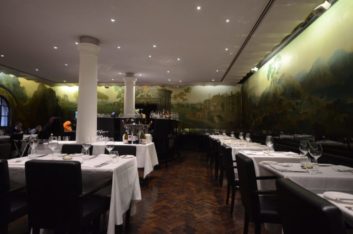 Sars describes Soundtrack Your Brand as a “one-stop shop”, providing the streaming infrastructure, access to music catalogues, licensing, rights clearance and CMS (content management system). On the equipment hardware side for reproduction in shops and venues, the company has partnered with several leading manufacturers, including HARMAN and AUDAC, to provide loudspeakers and other playback equipment.
Sars describes Soundtrack Your Brand as a “one-stop shop”, providing the streaming infrastructure, access to music catalogues, licensing, rights clearance and CMS (content management system). On the equipment hardware side for reproduction in shops and venues, the company has partnered with several leading manufacturers, including HARMAN and AUDAC, to provide loudspeakers and other playback equipment.
“We have a software platform, which runs on iOS, Android or Windows, and people connect their speakers to that,” Sars says. “We do have our own enterprise level hardware if required. It’s a Linux-based soundtrack player but it would still have to be connected to the speakers and cabling system. We are a software platform company, we don’t touch that kind of equipment.”
Consumer spending
Tom Van de Sande at AUDAC points to research that shows the right kind of music, matching a specific brand and played back through high quality equipment, results in consumers spending more time and money in a place. “This is something retailers have become more aware of than ever before,” he says.” We therefore strive to make it as easy as possible for them by setting up partnerships with music streaming services such as Soundtrack Your Brand and Spotify.”
HARMAN, as well as working with Soundtrack Your Brand, also has partnerships with PlayNetwork and Rockbot, each of which, as Caitlyn Rough highlights, has different means of distributing material. “Sometimes the customer wants to get a CD with all their content delivered once a month or quarterly,” she comments. “Other times, they’re streaming directly or may have a large playlist with music, content and branding messaging downloaded on to an on-premises computer that updates overnight. There isn’t really one answer or solution. It depends on the retail or hospitality brand and what the desired level of content is.”
As Autograph’s Euan Mackenzie comments, automatically curated playlists from a service provider – such as Perfect Octave, PlayNetwork and Soundtrack Your Brand – are becoming the norm for hospitality. A variety of distribution technologies, often controlled from a touch screen, are available for integrating with streaming services, including QSC Q-SYS and QLab. The latter can also be used in conjunction with the TiMAX 3D spatial audio system for immersive soundscapes (although these do not support streaming services).
It is easy to think that, because audio technology is now an integral part of our lives – Alexa and other voice-activated smartspeakers are the shining example of this – that every shop and bar has a state of the art sound system. From personal observation, in-store sound can still be as basic as a small (albeit stereo) DAB radio stuck on a shelf among the tinned fruit. But beyond that there is the potential for quite extraordinary levels of technological sophistication and environmental immersiveness.
The debate as to whether, despite all this cleverness, there should be audio in everyone’s favourite shops and bars will never end. But it does seem that modern technology, combined with corporate strategies, will continue to swing the argument away from the silent retail or dining experience.






